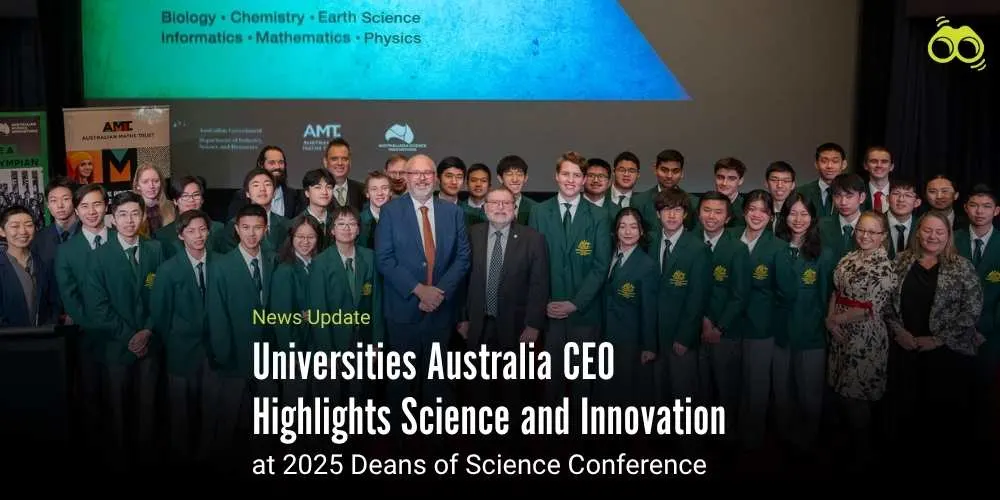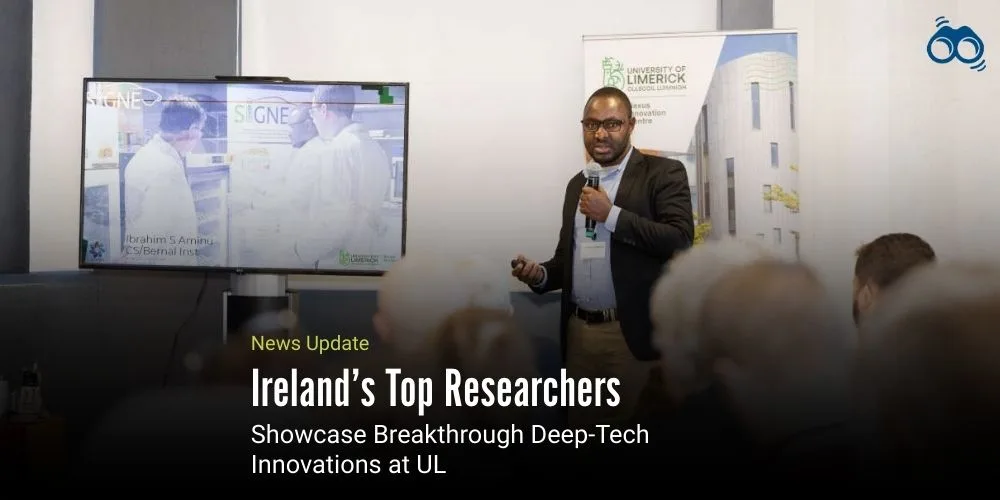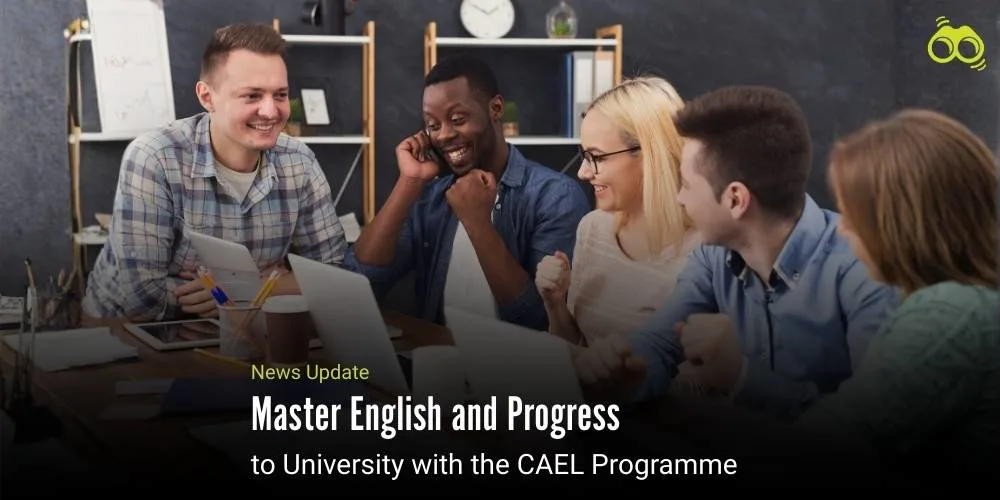Deans of Science Conference Highlights Urgent Need for R&D Reform in Australia
Luke Sheehy Warns of National Risk Without Stronger Support for Science
The international conference for deans in sciences will be held in 2025, where Luke Sheehy, who is the Chief Executive of Universities Australia, stated that the government should fast-track funding for science and innovation in the country because it is a necessary precursor for Australia's future prosperity based on a well-resourced research environment. While addressing an audience of academic leaders and research scientists, he also explained policies that would become a conduit to unlocking what faculties of Australian universities could achieve as leaders in national productivity, economic growth, and technology advancement.
Mr Sheehy began his address by acknowledging the Ngunnawal traditional custodians of land and commending Indigenous Australians for their contribution to research and higher education, remaining ever since. Following that, he paid tribute to the work of the scientific community in this country, reminding the audience that scientific innovation had given the world groundbreaking Australian innovations, which include cochlear implants, cervical cancer vaccine, black box flight recorder, penicillin, and printable solar cells. He went on to say that these developments are earned through centuries of research by Australian scientists who have placed Australia in the vanguard of global discovery.
But he threatened that Australia would fall behind unless there was firm action. Contrary to the government's stated commitment to productivity, research science remained on the periphery of policy priorities. Referencing the Universities Accord report, he underlined the need for increased research investment in pursuit of national competitiveness in a more complex world order. "Innovation based on fundamental, curiosity-driven research," he contended, "is the key to prosperity. Mr Sheehy cited a 13-year slide in research and development (R&D) spending, which had been called by industry leaders such as Robyn Denholm a "national emergency." To turn around the slide, Universities Australia has urged an increase in government R&D spending from 0.49 per cent of GDP to the OECD average of 0.74 per cent, to eventually get to three per cent. This, he explained, would help bring Australia closer to research leaders like Germany and the United States, both of which are spending more than three per cent of GDP on R&D.
He said that, where the public purse had not been enough, Australian universities had filled the gap, investing nearly $14 billion on R&D in 2022, over half of it from university funding, mainly supported by international student income. He explained that this dependence was not a matter of choice but of necessity due to reduced government support. Looking at infrastructure, Mr Sheehy pointed to the axing of the Education Investment Fund in 2019, which took away from universities almost $4 billion of long-term capital funding. He called on the government to restore a dedicated mechanism for funding laboratories, facilities and equipment critical to world-leading research. Universities Australia has also advised the government to match a minimum of half of each dollar of research to fund indirect costs, such as infrastructure.
Another source of concern was the shrinking PhD science labour pool. Local PhD enrollments had declined by 18 per cent since 2016, and the percentage of Honours graduates continuing to doctoral studies had plummeted from 37 per cent in 2017 to 16 per cent in 2024. This, he cautioned, would result in a 28 per cent decline in PhD completions by 2030. The reasons for the drop, he said, were cost-of-living pressures, low stipends and insecure employment in academia. To meet this, Universities Australia has called on the government to increase the PhD scholarship to $36,000 and double the 10 per cent limit of international PhD places under the Research Training Program, particularly in areas of strategic importance like engineering and information technology.
Demonstrating the commercial value of university research, Mr Sheehy used the case of Vicebio, a spinout business from the University of Queensland that was sold for more than a billion dollars this year, the biggest ever commercialisation of Australian university intellectual property. Though its obvious potential, molecular clamp technology forming the basis of Vicebio had originally been shunned by local investors but taken up by European drugs giant Sanofi. This, he contended, was evidence of a wider policy failure to promote innovation inside Australia's borders.
To streamline Australia's patchy research institutions setup, Universities Australia has suggested streamlining the 150 federal research programs into a dozen or so and administering them through a national research and innovation council comprising government, industry and academia. Administrative reform savings and unspent Medical Research Future Fund appropriations could subsequently be diverted into funding research block grants. He also supported calls for a 20 per cent premium on tax for private-sector research partnerships, a proposal favoured by a 30-organisation coalition, including the Business Council of Australia.
He urged greater support for the innovation hubs whereby universities, research institutes, hospitals, and companies collaborate for faster transfer of technology, citing examples such as Monash's Technology Precinct and Tech Central Innovation Hub in Sydney. Such interaction, he elucidated, is the key driver of technology and innovation in Australia's knowledge economy. Given the need for global collaboration through programs such as Horizon Europe, the EU $170 billion fund for research and innovation, Mr Sheehy welcomed Australia's renewed negotiations to be part of this program, stating that participation would allow better international collaboration and amplify the footprint of Australian research. Research has shown that every dollar invested in R&D returns threefold, and by engaging with Horizon Europe, this could increase to as much as elevenfold by 2045.
In summation, Mr Sheehy reaffirmed Universities Australia in its mission to support science and research, namely, to champion a strong, clear system that empowers scientists while stimulating innovation and sustaining Australia's status as a highly regarded research country in the world. He reaffirmed the organisation's commitment to a partnership with the government and the industry to ensure that science education in Australia continues to stand the test of international competitiveness and continues to produce discoveries for the enrichment of life. Essentially, a reiteration of the importance of continued investment, simplification of policies, and collaborative innovation in securing Australia's economic and scientific future was made during the address to the Deans of Science Conference 2025.
Editor’s Note
Mr Luke Sheehy’s address at the 2025 Deans of Science Conference was a timely and necessary call to action. His remarks made it clear that Australia’s future prosperity depends on strong investment in science, research, and innovation. The message was simple but urgent: without proper funding and policy support, Australia risks falling behind in a world that is rapidly advancing through technology and knowledge. It was encouraging to hear recognition of Australia’s long-standing contributions to global science, from the cochlear implant to printable solar cells. These achievements were not accidents; they were the result of decades of curiosity-driven research. Yet, as Mr Sheehy rightly pointed out, the current decline in R&D spending and shrinking PhD numbers are warning signs that cannot be ignored. His proposals restoring infrastructure funding, increasing PhD scholarships, and streamlining research programmes are practical and well-considered. They reflect a clear understanding of the challenges facing universities and the broader research sector. The example of Vicebio shows what is possible when university research is properly supported and commercialised.
Skoobuzz believes that this was not just a speech; it was a reminder that science is not a luxury, but a foundation for national progress. Australia must act now to protect and grow its research capacity.
FAQs
1. What was the focus of the Deans of Science Conference 2025?
The 2025 Deans of Science Conference centred on the future of science and innovation in Australia. Academic leaders, researchers, and policy experts gathered to discuss funding, infrastructure, research priorities, and the role of universities in national productivity and global competitiveness.
2. Who is Luke Sheehy, and what did he say at the conference?
Luke Sheehy is the Chief Executive of Universities Australia. In his keynote address, he urged the government to fast-track funding for science and innovation, calling it essential for Australia’s future prosperity. He emphasised the need for a well-resourced research environment and stronger support for university-led R&D.
3. Why is science funding important for Australia’s economy?
Mr Sheehy argued that science funding is a key driver of national productivity, economic growth, and technological advancement. He highlighted that innovation based on curiosity-driven research is vital for long-term prosperity and global relevance.
4. What is the current state of research and development (R&D) investment in Australia?
Australia’s R&D spending has declined over the past 13 years. In 2022, universities invested nearly $14 billion in R&D, with more than half funded internally—mainly through international student income. Mr Sheehy called this reliance a necessity due to reduced government support.
5. What changes did Universities Australia propose for R&D funding?
Universities Australia recommended increasing government R&D spending from 0.49% of GDP to the OECD average of 0.74%, with a long-term goal of reaching 3%. This would bring Australia closer to leading research nations like Germany and the United States.
6. What infrastructure concerns were raised?
Mr Sheehy criticised the 2019 closure of the Education Investment Fund, which removed nearly $4 billion in capital funding for universities. He called for a dedicated mechanism to support laboratories, research facilities, and equipment essential for world-class science.
7. What is the issue with PhD enrolments in Australia?
PhD science enrolments have dropped significantly, with a projected 28% decline in completions by 2030. Universities Australia attributed this to low stipends, cost-of-living pressures, and insecure academic employment. They proposed raising PhD scholarships to $36,000 and expanding international PhD places.
8. How does university research contribute to commercial success?
Mr Sheehy cited Vicebio, a spinout from the University of Queensland, which was sold for over $1 billion, the largest commercialisation of Australian university intellectual property. He used this example to show the value of university research and the need for better local investment.
9. What reforms were suggested for Australia’s research system?
Universities Australia proposed streamlining 150 federal research programmes into a dozen, managed by a national research and innovation council. They also supported a 20% tax premium for private-sector research partnerships to encourage industry collaboration.
10. What are innovation hubs, and why are they important?
Innovation hubs are collaborative spaces where universities, research institutes, hospitals, and companies work together to accelerate technology transfer. Examples include Monash’s Technology Precinct and Sydney’s Tech Central. Mr Sheehy described these hubs as key drivers of Australia’s knowledge economy.














0 Comments (Please Login To Continue)